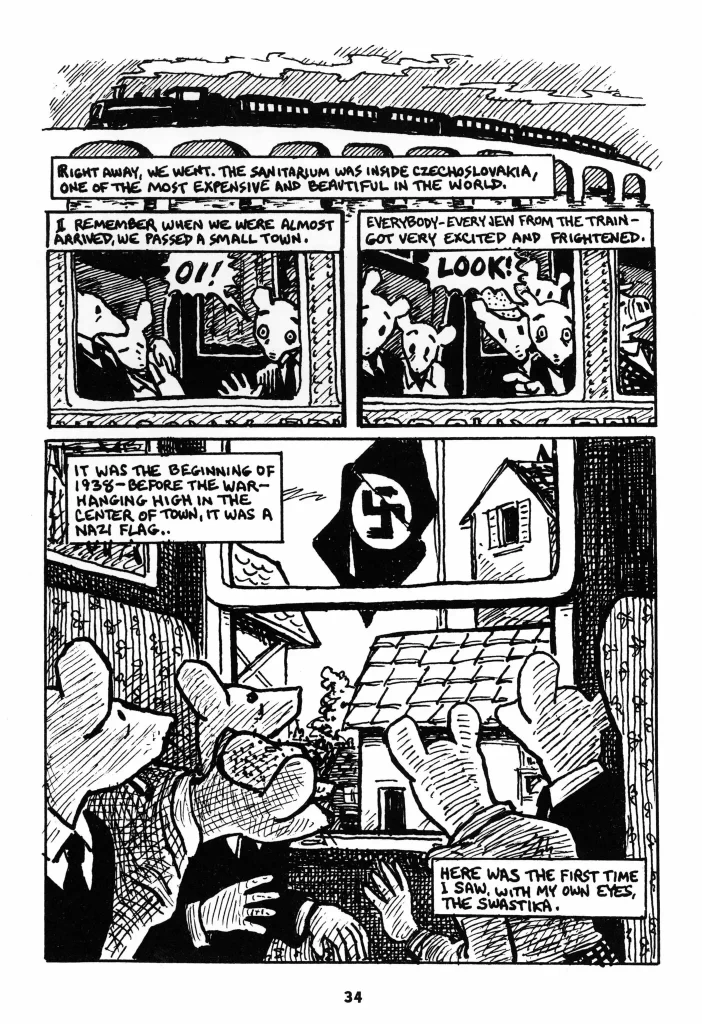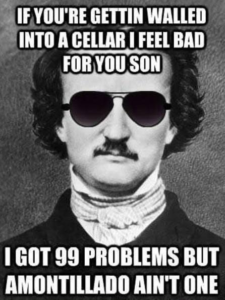I saw on social media last week that my former student Stephanie Ballard Conrad was talking about studying banned books back when she was an undergraduate nearly 20 years ago. I asked if she could give us a look back at what she read and learned about challenged books years ago. She was good enough to send me this. Thanks, Stephanie!
In the spring of 2019, I received an unexpected package via campus mail to my office at the university where I completed my undergraduate degree years before. As I opened the bulky manila envelope I found a blue Mead notebook with a pale pink Post-It note on the cover. It was from my former English professor, sharing a “blast from the past” — it was my reading journal from my independent study course from spring semester 2003.
I was quickly taken back sixteen years to my final semester as a public relations major, minoring in English literature. I had registered for one of the professor’s higher level literature classes and on the first day, every seat in the room was full. To help mitigate the size of her class, she offered the option of creating an independent study to students who were interested. I was game. We were advised to come up with a theme for our study and after weighing several options, I landed on banned books with my professor’s enthusiastic support and approval.
Every few years the concept of book banning becomes a hot topic and I think back to this college endeavor. I’m not sure if this was the spark that inspired my theme, but I knew that by exploring works that were controversial, I would find books that were interesting and relevant.
I started by looking at lists online of commonly banned books. Interestingly, I had already read many of them as part of other classes as early as middle school – To Kill a Mockingbird by Harper Lee, I Know Why the Caged Bird Sings by Maya Angelou, Of Mice and Men by John Steinbeck, Animal Farm by George Orwell to name a few. These and other works are considered classics yet still face criticism for discussing topics perceived as controversial. Selecting other classics from the lists for my independent study, I chose to read Song of Solomon by Toni Morrison, Death of Salesman by Arthur Miller, Catcher in the Rye by JD Salinger (surprisingly, I didn’t read that in high school), and select chapters from Homer’s Odyssey.
One lasting lesson that has stuck with me, even eighteen years after that independent study, was that in considering the reasons why some books were banned during a certain time period, the actual passages or themes or words used didn’t seem so controversial years later. For instance, according to my notes, Death of a Salesman was banned in the 1970s and 1980s for profane language. The Odyssey was banned in ancient Greece because of themes of freedom which were contrary to Greek government ideals during that period in history.
Also, other books incorporate themes that continue to cause concern for some today. Song of Solomon and Catcher in the Rye deal with serious issues such as race, suicide, and sexuality – some of the exact same topics that are sparking book bans again in the US in 2022. These topics are complex and remain ones that people continue to face.
As I look back today, my opinion on banning books hasn’t changed nearly 20 years later. Even after having my own children who I want to protect and nurture, I still see these and other books as important. They teach valuable lessons and help readers know that they are not alone in their experiences and/or feelings.
I noted back in 2003 that some books were obviously more appropriate for certain age and reading levels, which I also still believe today. I wouldn’t expect to see Song of Solomon in an elementary library, for instance, but I would hope that high schoolers would see it on their library shelves. That caveat aside, book banning creates a culture of avoidance – and we can’t learn from avoidance.
The freedom that I felt from creating my own independent study and then selecting my own readings from lists of previously banned books is a kind of freedom that I hope other readers, young and old, continue to experience.
Stephanie A. Ballard Conrad, MA; West Virginia University, Class of 2003, 2021








